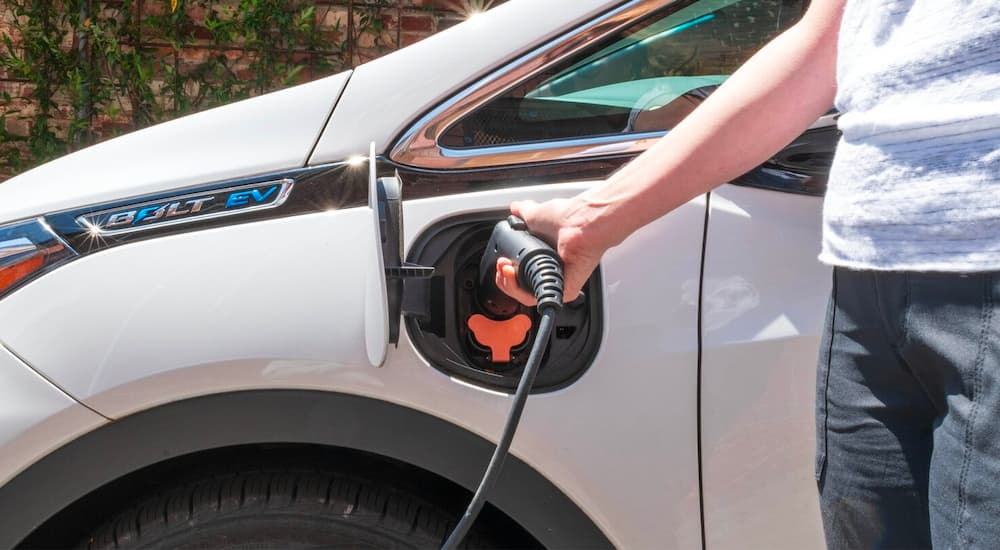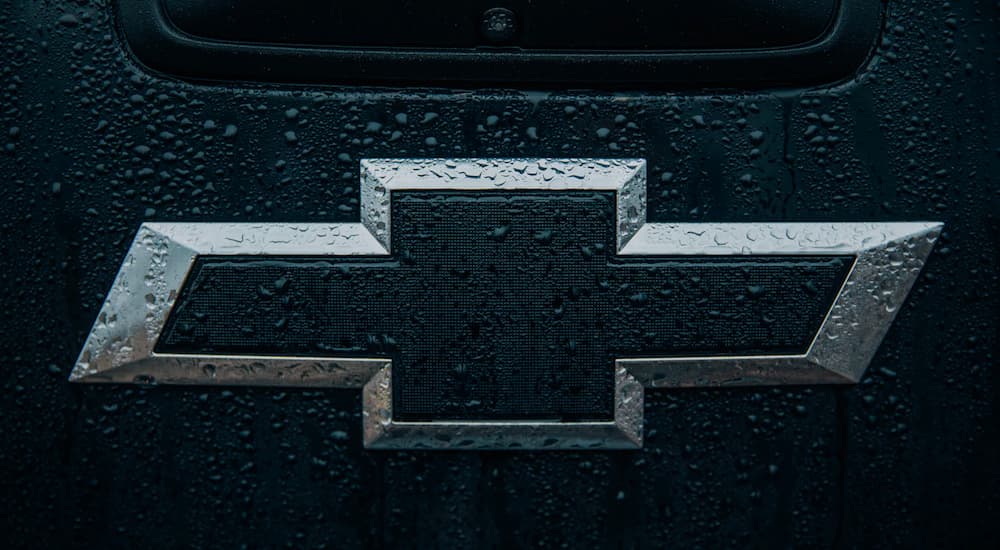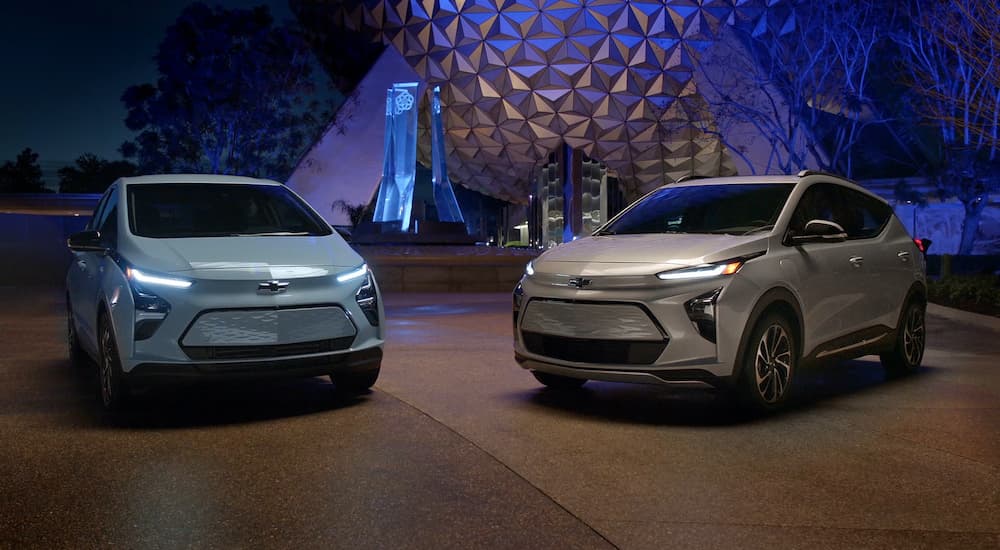
There is a paradigm shift in progress in the automotive industry. Electric vehicles have proven to offer smoother, faster, more efficient, and even more convenient transport than conventional cars and trucks. Electric vehicles don’t require conventional gearboxes, they make no real noise, they offer huge amounts of instant torque, offer double the energy efficiency of even the most fuel-sipping engines, and they can be charged in your garage instead of at a pump. And all of that was accomplished while the modern practical electric vehicle is still in its infancy. Chevy EVs of the present, and the upcoming EVs in the General Motors lineup, are taking advantage of this paradigm shift.
Ultium
The linchpin of GM’s upcoming EV strategy is known as Ultium, and this technology is what the company is banking on to carry it into the rapidly evolving future of electric vehicles. Ultium is General Motors’ family of battery technologies. It takes advantage of the extreme modularity of the individual components that make up an electric vehicle to reduce costs and easily increase performance across a wide range of planned models.
In keeping with the rapid development and pace of the technology underpinning the batteries, Ultium has gone through two production generations before even being released in a production vehicle. The first generation of Ultium was essentially supplier-produced off-the-shelf units with older chemistry. Despite the lack of energy density and efficiency compared to the cutting edge units of the time, GM opted to use what was on hand so they could get their hat in the ring as soon as possible. The plan to make up for the lacking efficiency was simply to add more batteries, which increased range dramatically, but weight as well.
But before the first Ultium-powered vehicles had an assembly line, the second generation debuted. This Ultium upgrade was dramatically different from its first incarnation, with a completely different and vastly improved battery chemistry. The new Lithium-ion battery blend is not just higher performance than the previous iteration but is produced by GM itself at a much lower cost. Among the many paradigm shifts, the industry is currently realizing is that, in electric cars and trucks, it is the battery that takes the prime place of importance an engine would have, not the electric motor.
This is important because suppliers have long provided much of what makes up a total vehicle, except for developing the frames, transmissions, and engines themselves. In many ways, big automakers have long been mostly engine makers. In short, this means that since the battery is at least as much a core component of a vehicle as the engine is in an internal combustion-powered car, it is too important to be manufactured by outside suppliers. In keeping Ultium up to date and in-house, GM has not just secured its future and advancing technology forward as well.

E-Ray
While not a pure EV, there are substantiated rumors that a hybrid Corvette is coming. Corvette has always been something of a battleground of traditionalism against technology, with every generation drawing controversy for everything from tail lights to engine placement. The E-Ray, as it has been dubbed by the media, is certain to cause quite a stir in a community whose vehicle of choice still uses a pushrod V8. That said, the pushrod V8 is there for the same reasons it almost always has been. A lower center of gravity than the more complex and often less reliable dual overhead cam setups of more “modern” engines while still making the same power.
Over time, with the Corvette, performance tends to win. Literally and figuratively. The performance implications of an all-wheel drive mid-engine car with partially electrified power should be apparent to most car people on instinct. The mid-engine layout of the C8 Corvette, another sticking point with traditionalists, makes the car a full second faster in a zero to sixty sprint because of the extra traction that layout provides. Adding to that the traction of the front wheels, and the result would very easily be the fastest accelerating Corvette ever, with that level of power. Not only that, but the all-wheel drive would make it easier to drive as well.
Electric Crossovers
Another automotive paradigm shift that has already been completed is the rise of the crossover. These SUVs built with unibody designs offer the fuel economy, convenience, ease of operation, and space of a wagon or minivan, but with a high riding stance. While electric cars made EVs cool, electric crossovers are almost certainly what will make the largest contribution to the quickly expanding market share of electric vehicles.
Chevy’s current electric crossover is the 2022 Bolt EUV, an enlarged version of the Bolt hatchback. This small crossover’s electric powertrain has already been successful enough to be offered as a “crate motor” option for the aftermarket, allowing it to be dropped into just about any vehicle one can fit batteries in. The Bolt EUV itself offers a solid amount of interior space, surprising amenities, and an even more solid range. The best part about the Bolt EUV is the pricing, which allows most people to seriously consider an electric vehicle instead of a middle-market standard car.

Silverado
A four hundred-mile range electric Silverado has been confirmed and is currently in development. Simply put, electric trucks are best. They offer enormous amounts of torque instantly without the need to shift gears and can easily get the equivalent of double or triple the gas mileage of a normal pickup truck. They are much quicker in terms of acceleration and can pull more weight than just about anything besides a small semi or a heavy-duty pickup truck, which the electric motors will likely roughly match in terms of torque.
The range is impacted by heavy and aerodynamic towed loads, but this is countered by simply including more range than is needed from the get-go. Four hundred miles without a trailer is still going to be more than enough to reach the next charging station with a trailer, so you don’t have to worry about running out of power. Plus, with fast charging, you’ll be back on the road in no time.
Multiple Incoming Models
General Motors has seen the tide changing, and as such, has invested massively in electric vehicles. The billions of dollars are not just a paper figure for headlines but have gone into revamping multiple factories and building new battery production facilities. These new facilities can rapidly make the state of the art second generation ultium battery cells, which will underpin the upcoming generation of planned models. Crossovers, full-size trucks, and more are inbound.
EVs Are Taking Over
The future is coming fast, and Chevy is getting ready to make the most of it. Not just by building the cars, crossovers, and trucks of the future, but by pitching in with fast charger installation across the country as well. These are exciting times, especially as EV technology and battery technology continue to mature with lightning speed. While there are many who are skeptical about how good EVs really are compared to current vehicles, GM is already showing people that electric power is superior. The next generation of EVs promises to continue the advances seen with the current generation: lower costs, longer ranges, faster charging times, and better acceleration.




